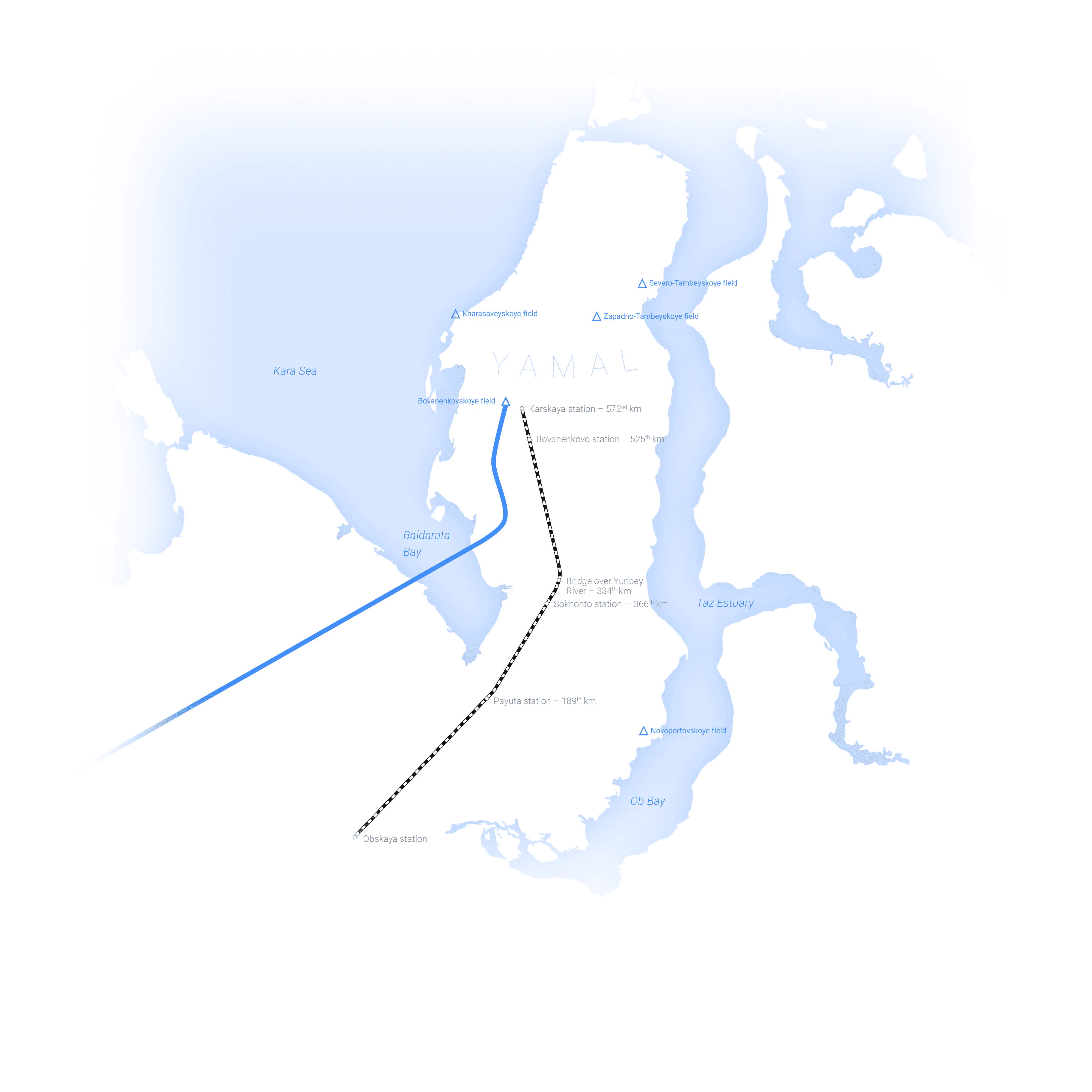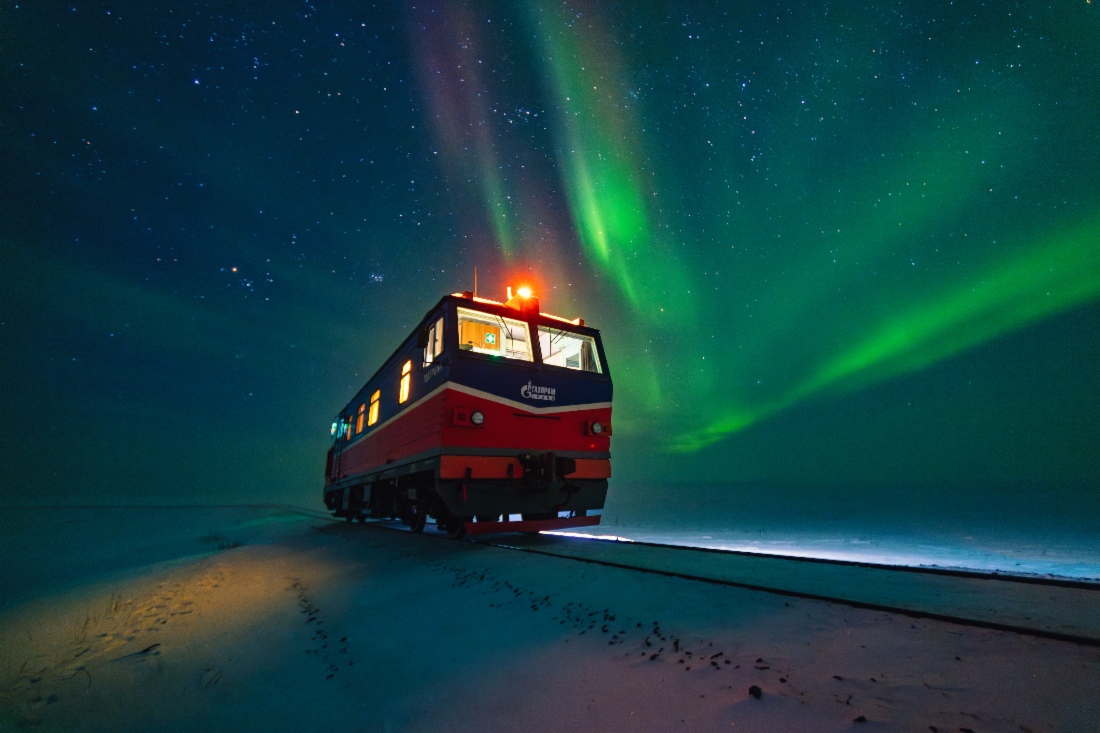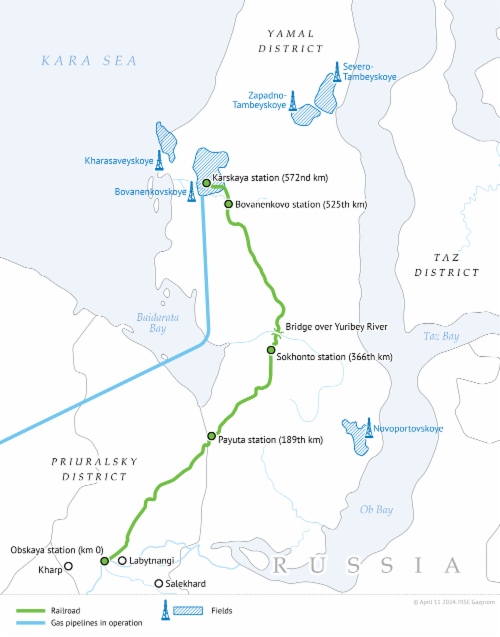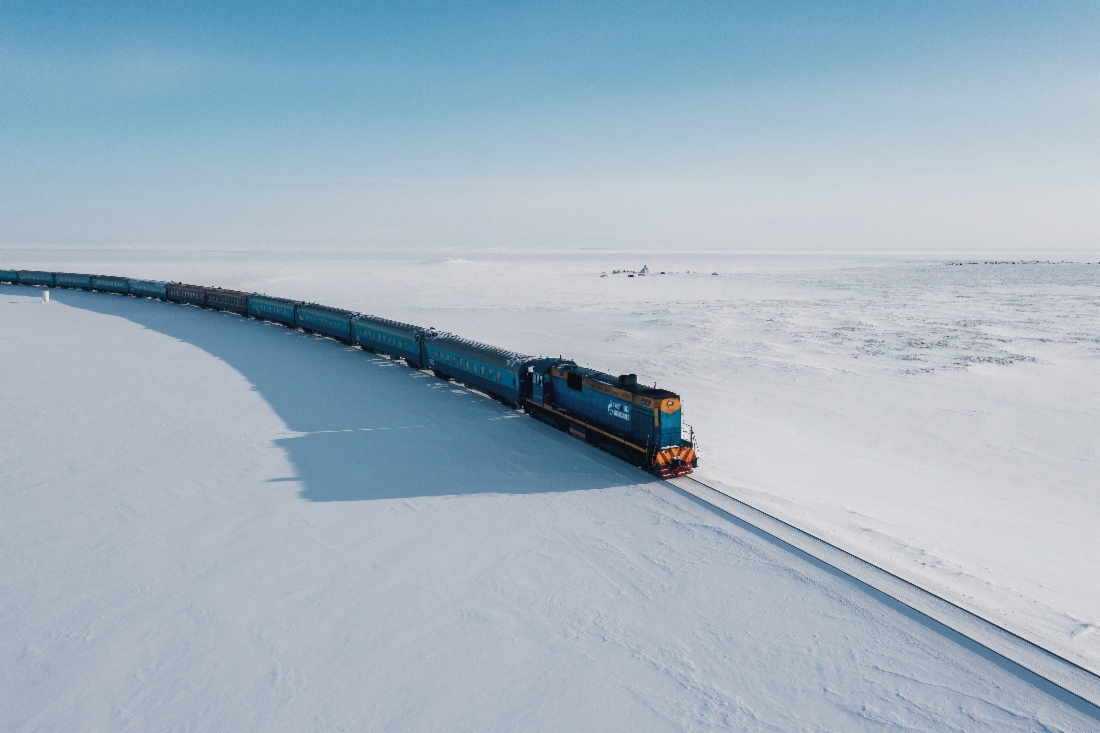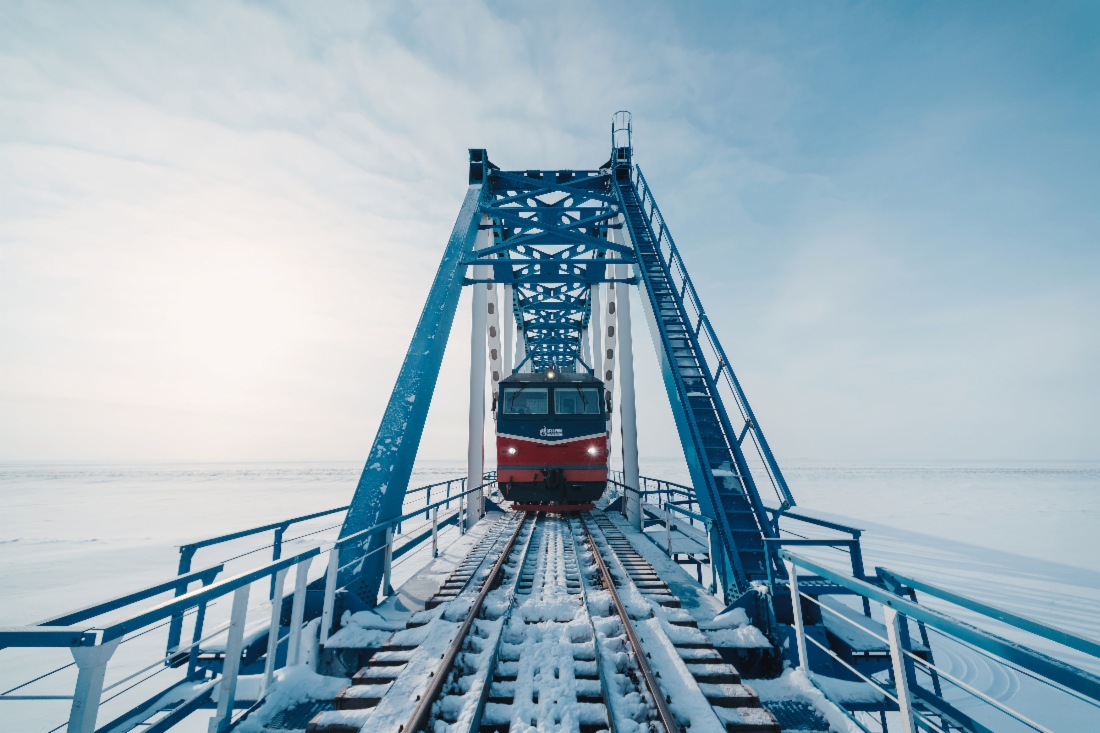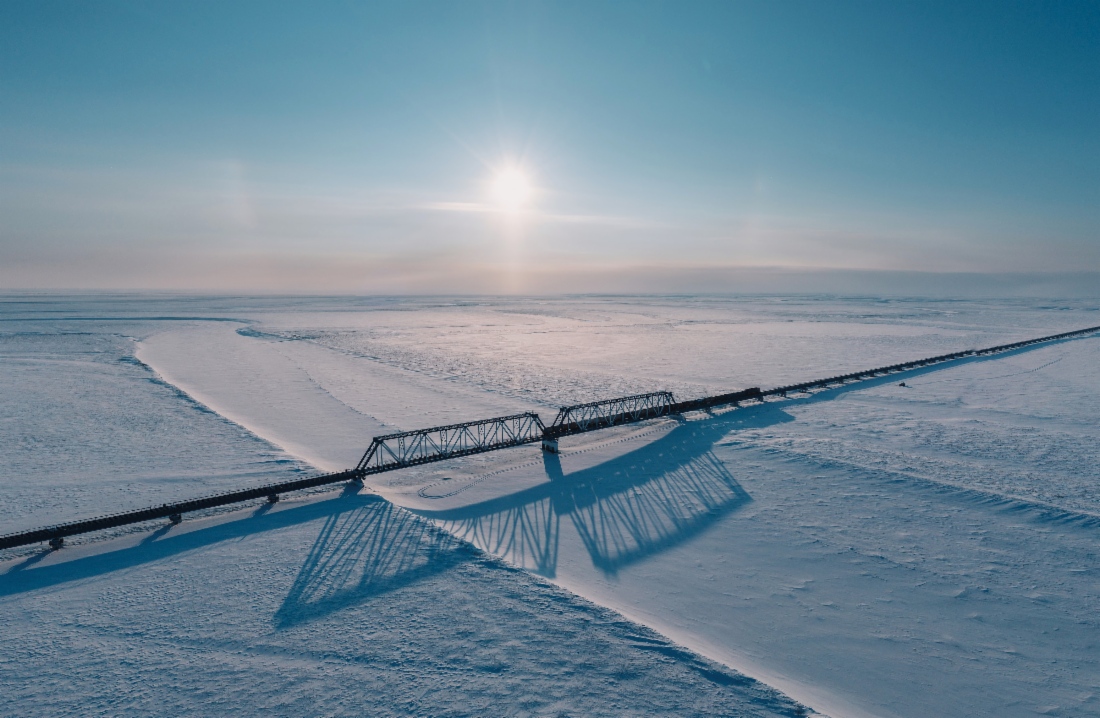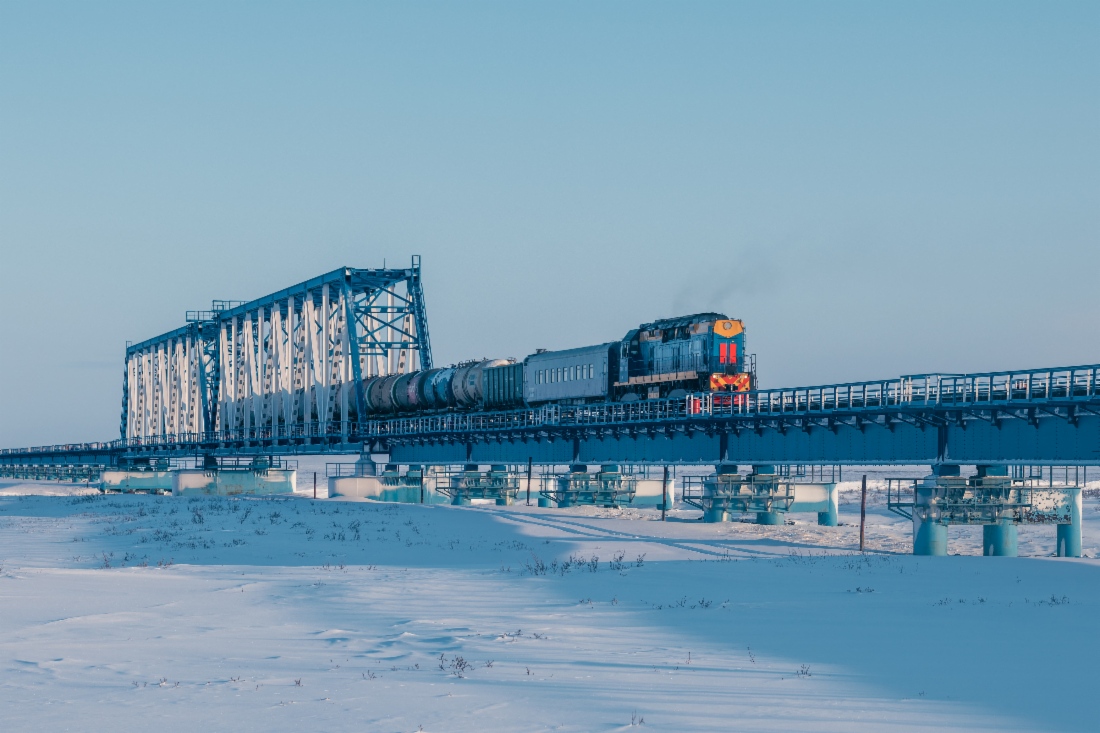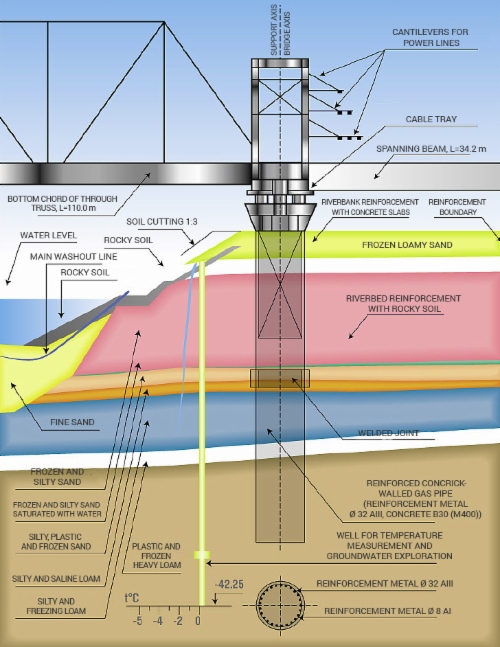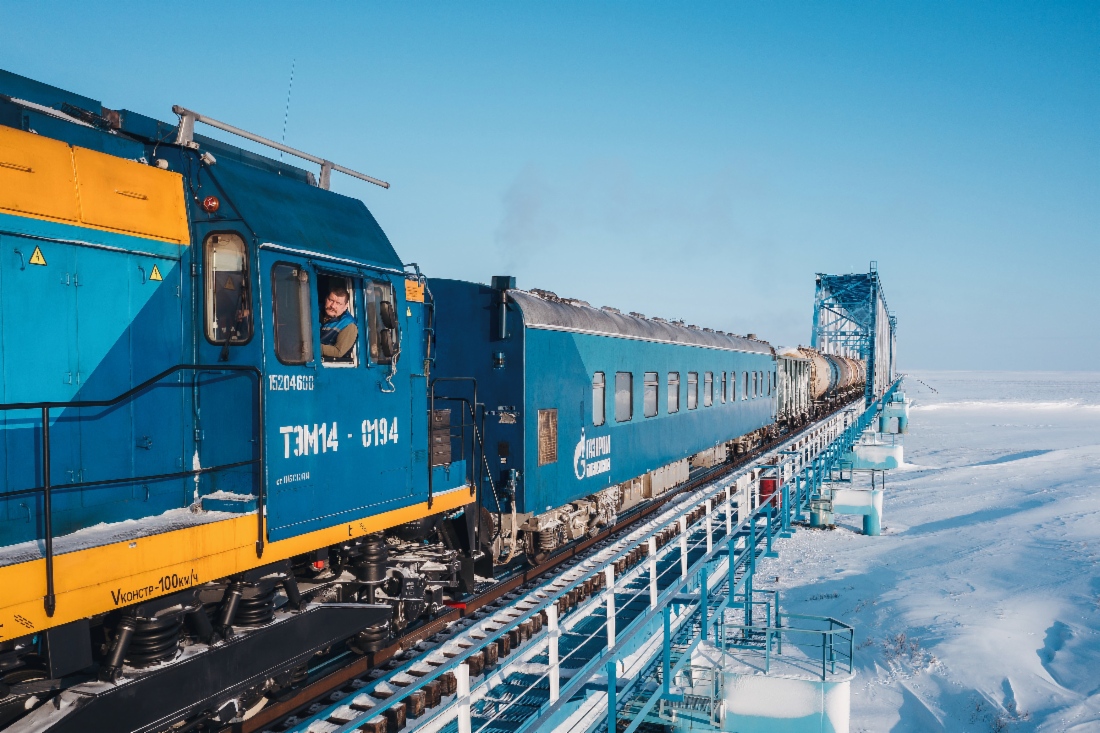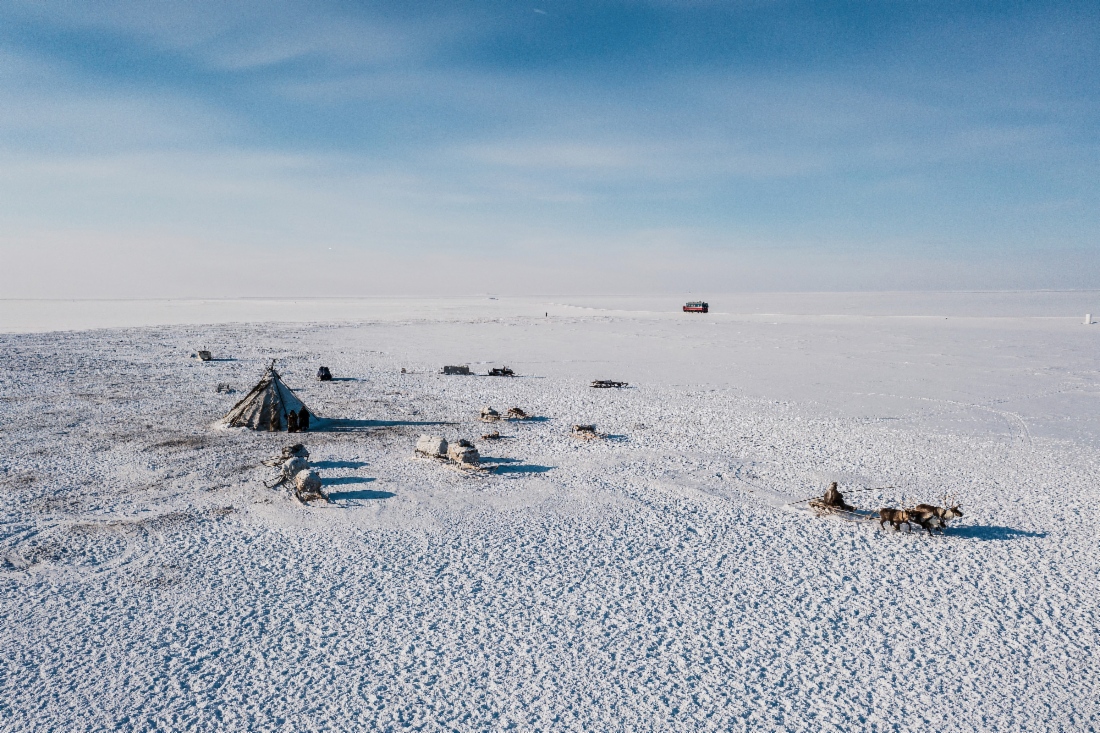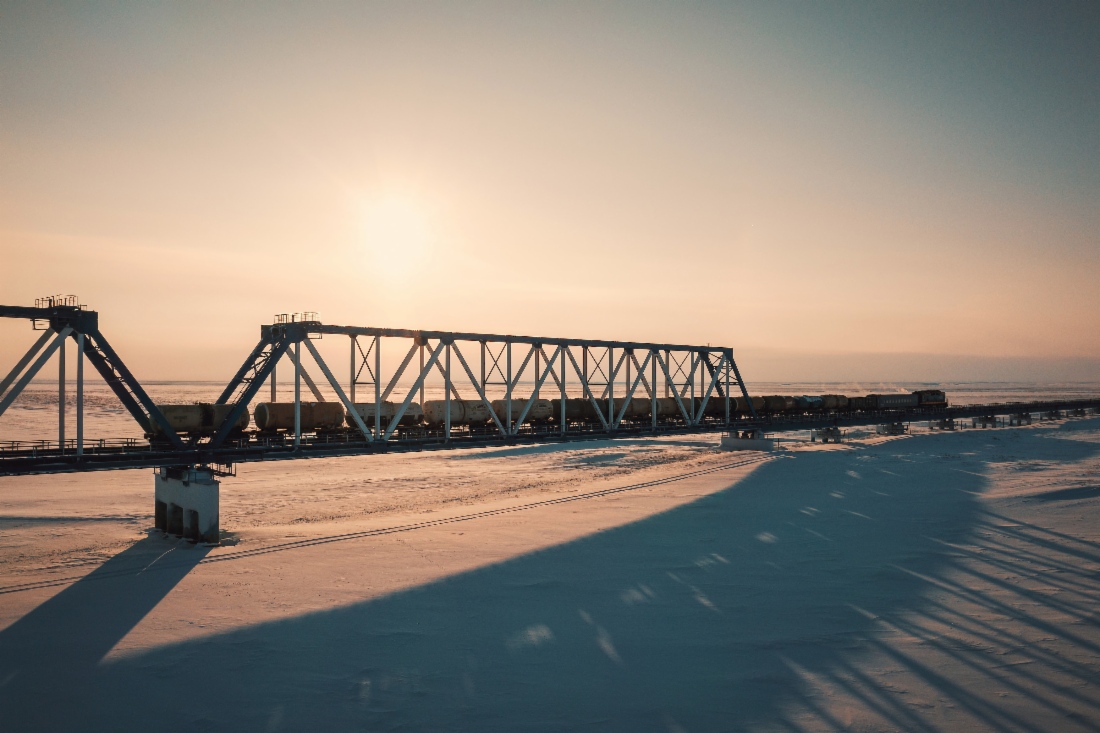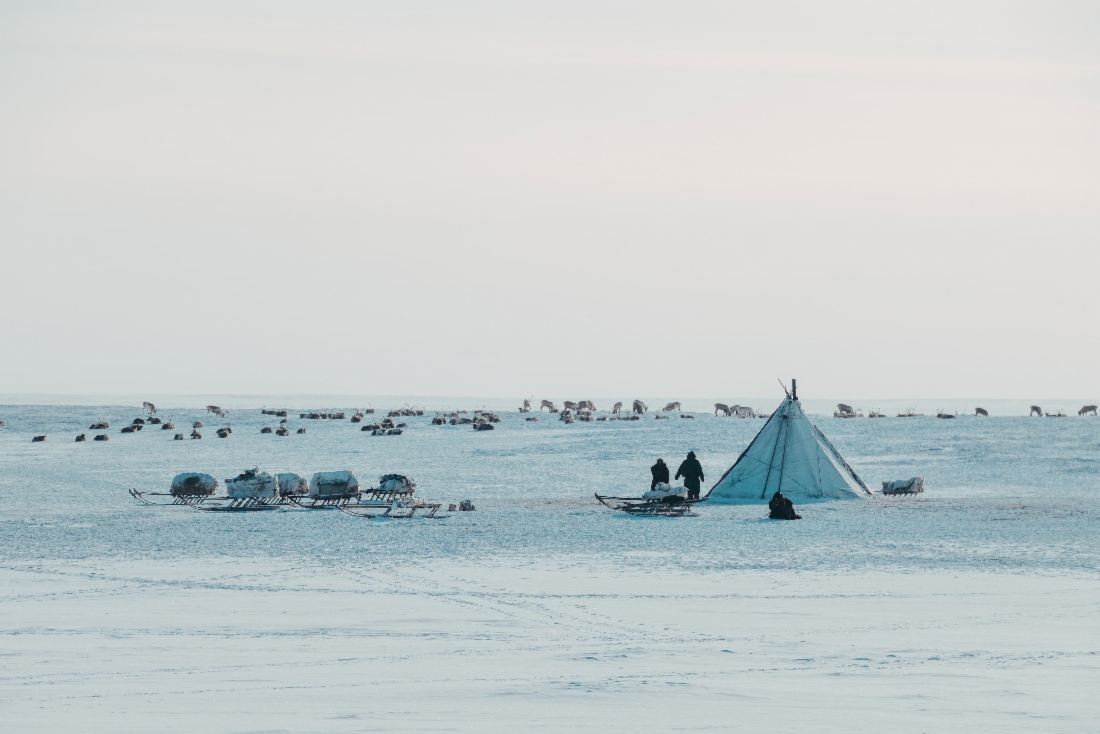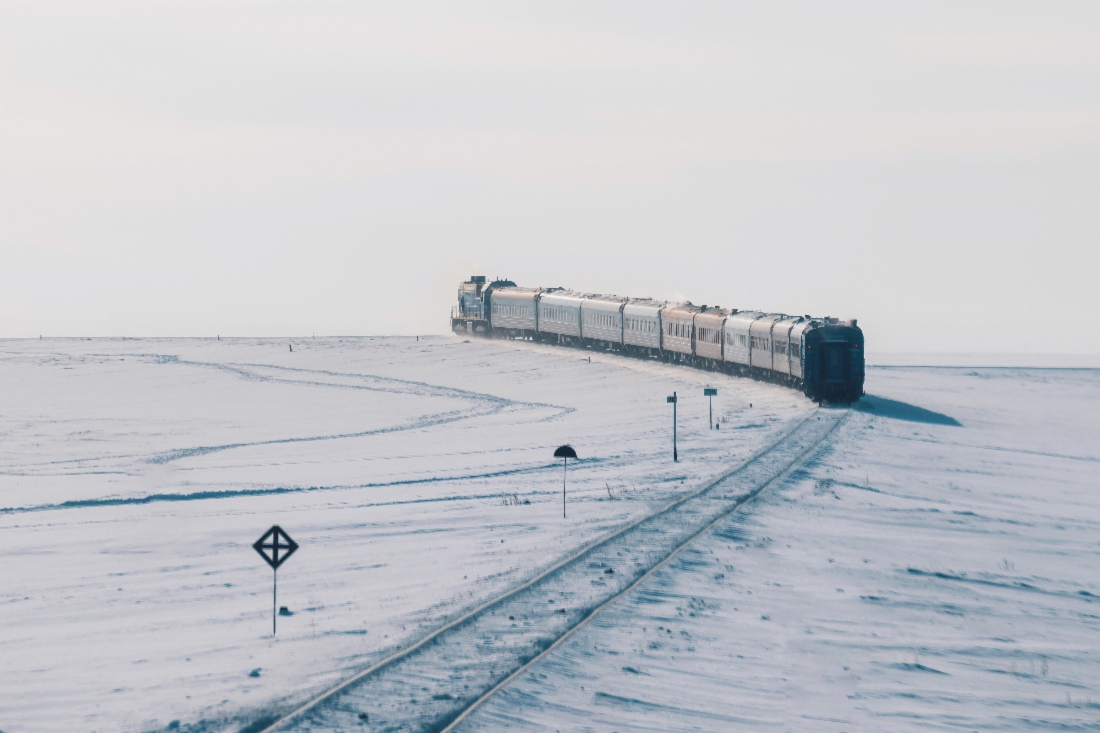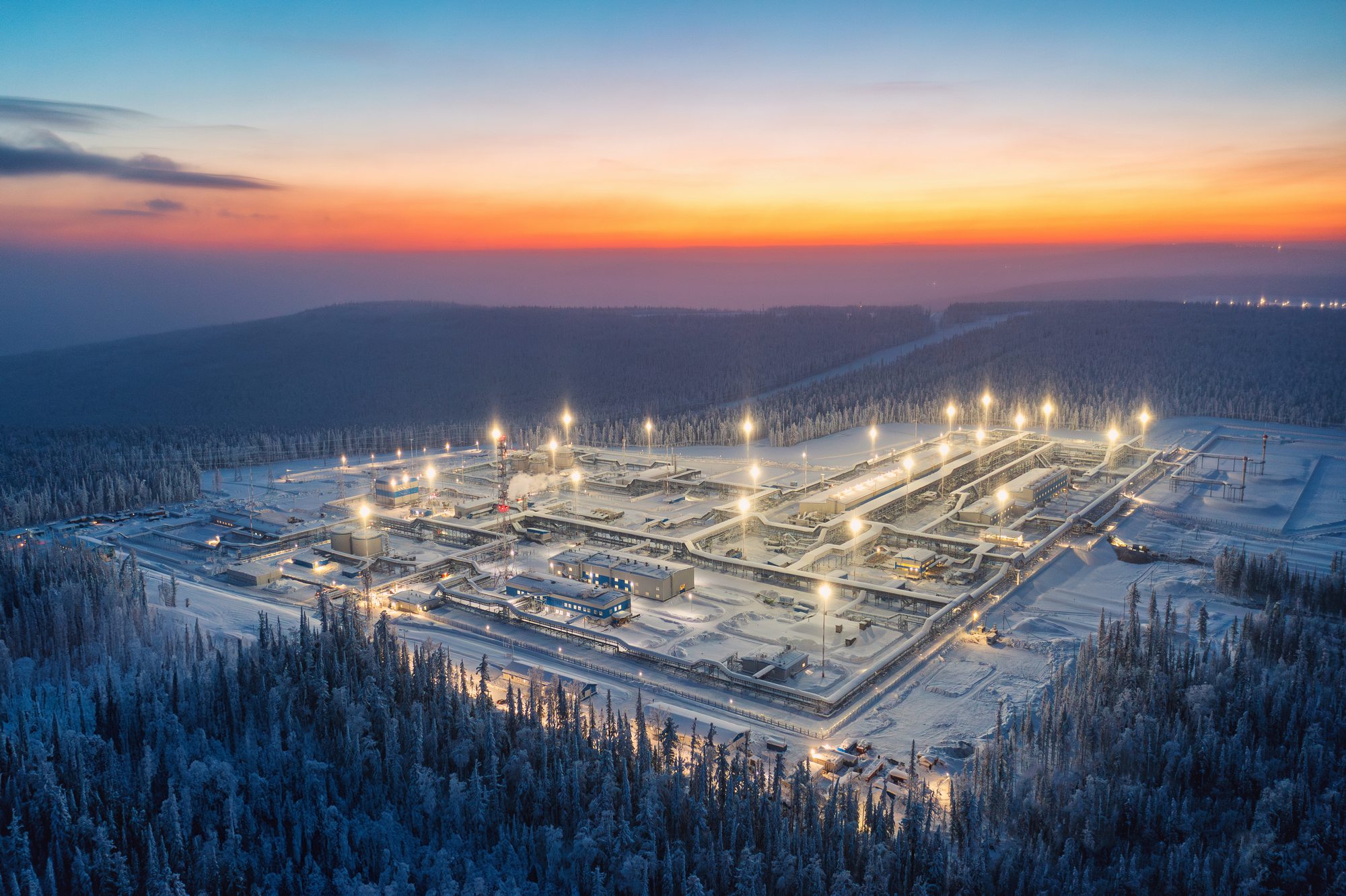The Obskaya – Bovanenkovo railroad has proven vital to Gazprom’s Yamal megaproject. The railroad ensures year-round, fast, cost-effective and all-weather delivery of technical equipment, construction materials and personnel to Yamal fields in the harsh Arctic climate. Cargo used to be delivered to the Yamal Peninsula by sea through the Kharasavey port during the summer navigation period. However, it would have been impossible to create large-scale infrastructure in Yamal without expanding railroad communication.
The railroad stretches for 572 kilometers from the Obskaya station to the Karskaya station (525 kilometers to the Bovanenkovo station). It includes 5 stations, 12 passing loops, and 70 bridges with a total length of more than 12 kilometers. The entire railroad was opened for traffic in 2011.
Construction specifics
Due to the presence of permafrost, the prevalence of swamps, and the need to preserve Yamal’s environment, unique technologies were used in the construction of the Obskaya – Bovanenkovo railroad.
With a view to protect the ecosystem and preserve the load-bearing capacity of permafrost, all construction operations for the core facilities are conducted in subzero temperatures. The railroad embankment was made from damp silty sand, which solidifies under low temperatures. A unique multi-layered heat insulation system was developed and employed to ensure roadbed stability in summer: expanded polysterene was laid over frozen sand and geotextile reinforcements were installed.
Around 7,500 workers were engaged in the construction process. The rails, complex metal structures, and insulation materials used in the project were produced by Russian companies.
Bridge over Yuribey River
The bridge over the Yuribey River floodplain was the biggest challenge in the Obskaya – Bovanenkovo construction project. The structure has no precedent in bridge-building practices in terms of design and the climatic and geocryological conditions of construction and operation.
At 3.9 kilometers in length, it is the world’s longest bridge beyond the Arctic Circle. Its life span is 100 years.
The builders managed to set up the bridge on a surface that is practically unfit for construction, as it consists of permafrost interspersed with cryopegs (saline water lenses in permafrost bodies that do not freeze at temperatures above minus 30 degrees Celsius).
In order to preserve the ecosystem of the Yuribey River floodplain, the engineers opted out of the traditional practice of erecting embankments for bridge construction. As a result, the structure is very long: the bridge not only crosses the perennial stream, but also spans Yuribey’s entire width during heaviest flow periods.
The bridge consists of 107 standard spans, each of them 34.2 meters long, and 2 through trusses, 110 meters long each. The spans and trusses were installed on 110 supports made from metal pipes filled with reinforced concrete, 1.2 to 2.4-meters meters in diameter. The supports go down in permafrost to a depth of 20 to 40 meters. Thanks to modern technologies and a special freezing method (thermal stabilization), the supports are virtually frozen into the ice (permafrost), further reinforcing the structure. Novel technologies developed by Russian researchers and engineers prevent the permafrost from thawing.
Within 349 days it took to erect the bridge, the builders put together 26,500 tons of metal structures, including 8,700 tons of spans and 17.8 tons of metal supports.
Environmental protection
Yuribey is an unusual river. Its riverbed is less than 200–300 meters wide. It is only for several days a year that the river overflows its banks and spreads across 3–4 kilometers, subsiding later. The waters and banks of Yuribey form a unique ecosystem of great historical and cultural value.
The river’s waters are a breeding ground for precious fish species, such as nelma and muksun. Rare bird species listed in Russia’s Red Book of Endangered Species nest and breed on the river brinks. In summer, reindeer are born on pastures in Yuribey’s lower reaches.
Yuribey has sacred significance for indigenous tundra dwellers, and there are many legends associated with the river. It is on the banks of Yuribey that the Extreme North natives had set up their main sanctuaries. Tundra dwellers offer ritual gifts and sacrifices to the willful Yuribey. They never catch fish in the same place, so that the river could rest. Birds are hunted for food only. The locals take from nature only as much as they need to sustain their lives.
It was near Yuribey that scientists discovered the traces of ancient civilizations and the remains of two mammoths, now known to the global scientific community as Masha the mammoth and Lyuba the mammoth calf.
Aiming to avoid disturbing the age-old traditional lifestyles of the locals and to preserve unique wildlife, the engineers took a nonconventional approach in constructing the bridge over the Yuribey River, raising the railroad above the water via a one-of-a-kind flyover. Construction commenced only after special-purpose safe technologies were developed.
The bridge was designed in such a way so that not a single one of its structural elements could harm the traditional lifestyles of indigenous peoples and Yamal’s environment during construction and operation.

